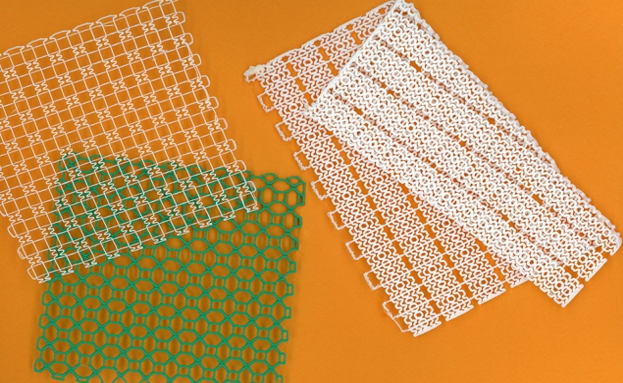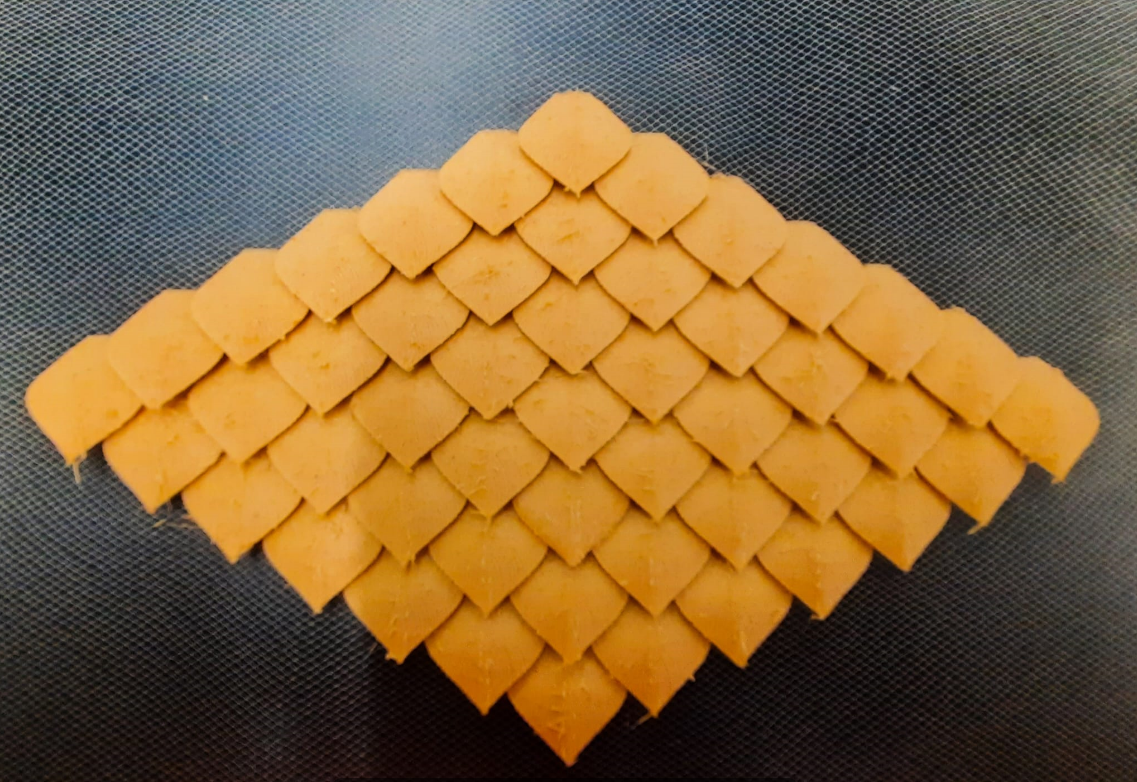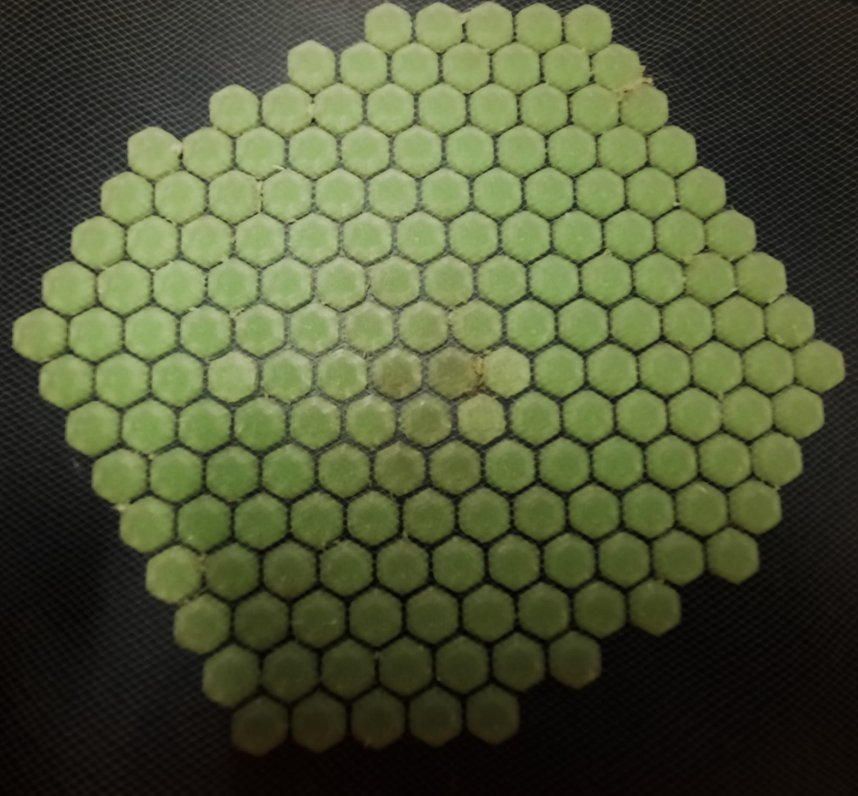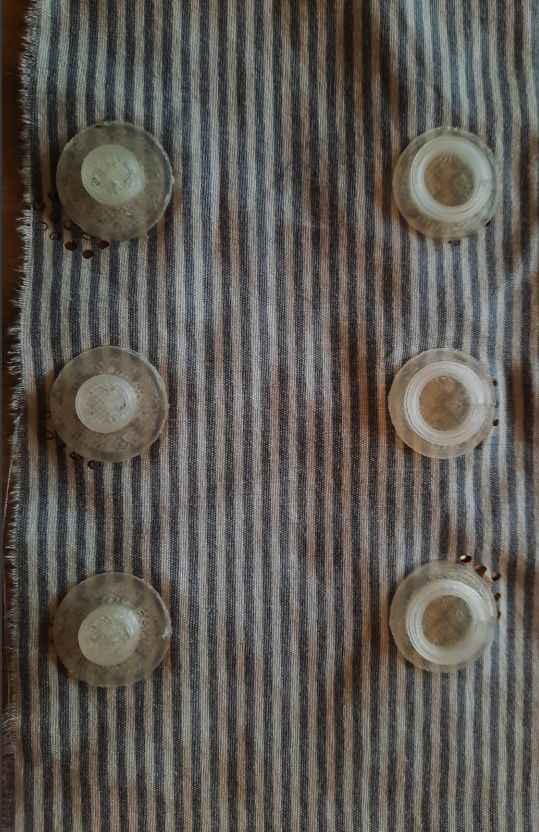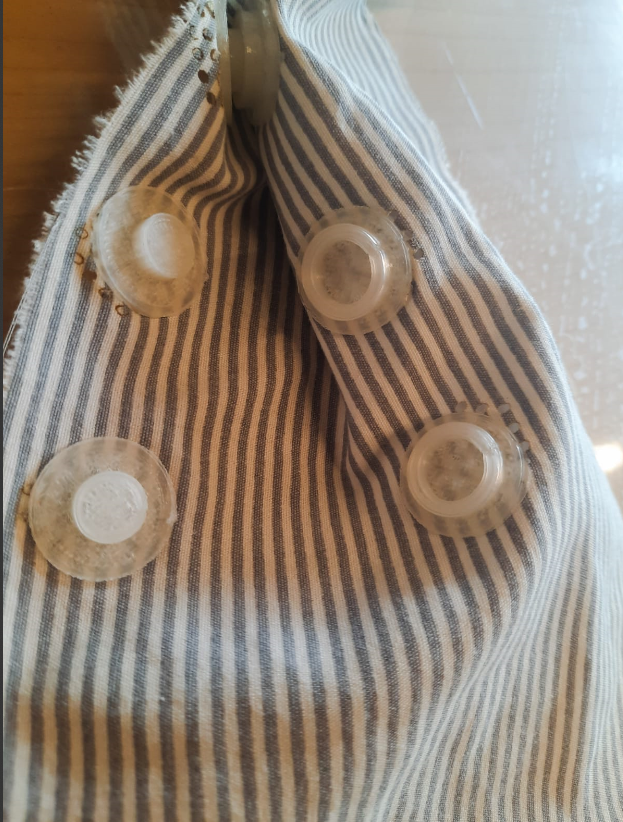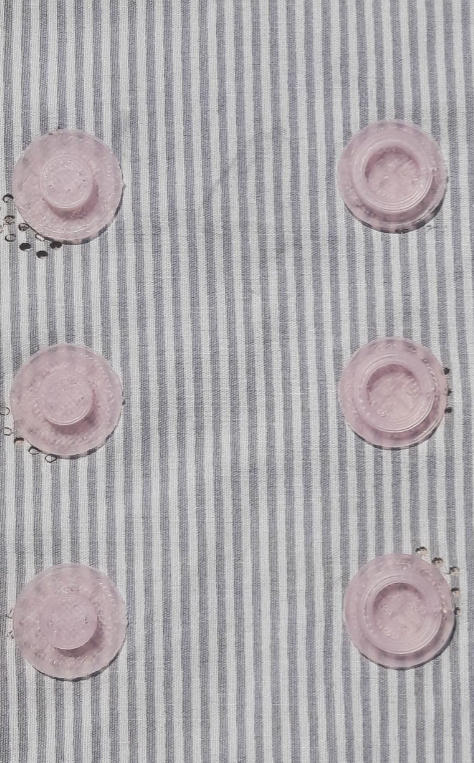Difference between revisions of "Digital technologies/Textiles/3D printing on Fabric"
| Line 38: | Line 38: | ||
Snap buttons can revolutionize the way you use buttons, which are usually sewn on your shirts. | Snap buttons can revolutionize the way you use buttons, which are usually sewn on your shirts. | ||
| − | [[File:Snap buttons1.png|center| | + | [[File:Snap buttons1.png|center|400x600px|Snap buttons|link=Special:FilePath/Snap_buttons1.png]] |
<div class="center" style="width: auto; margin-left: auto; margin-right: auto;">Figure 4. Photochromatic snap buttons on woven fabric</div> | <div class="center" style="width: auto; margin-left: auto; margin-right: auto;">Figure 4. Photochromatic snap buttons on woven fabric</div> | ||
| − | [[File:Snap buttons2.png|center| | + | [[File:Snap buttons2.png|center|400x600px|Snap buttons|link=Special:FilePath/Snap_buttons2.png]] |
<div class="center" style="width: auto; margin-left: auto; margin-right: auto;">Figure 5. Photochromatic snap buttons</div> | <div class="center" style="width: auto; margin-left: auto; margin-right: auto;">Figure 5. Photochromatic snap buttons</div> | ||
| − | [[File:Snap buttons3.png|center| | + | [[File:Snap buttons3.png|center|400x600px|Snap buttons|link=Special:FilePath/Snap_buttons3.png]] |
<div class="center" style="width: auto; margin-left: auto; margin-right: auto;">Figure 6. Photochromatic snap buttons under UV light</div> | <div class="center" style="width: auto; margin-left: auto; margin-right: auto;">Figure 6. Photochromatic snap buttons under UV light</div> | ||
| Line 53: | Line 53: | ||
Different types of filaments were used. You can use the material of your choice and make the necessary changes in your 3D slicer. | Different types of filaments were used. You can use the material of your choice and make the necessary changes in your 3D slicer. | ||
| + | |||
| + | ==Filament used== | ||
| + | {| class="wikitable" style="margin:1em auto 1em auto;" | ||
| + | |+ | ||
| + | ! scope="col" |Nom du Fichier | ||
| + | ! scope="col" |Couche/Modèle | ||
| + | |- | ||
| + | |copper_bottom.gbr | ||
| + | |BottomLayer | ||
| + | |- | ||
| + | |copper_top.gbr | ||
| + | |TopLayer | ||
| + | |- | ||
| + | |profile.gbr | ||
| + | |BoardOutline | ||
| + | |- | ||
| + | |silkscreen_bottom.gbr | ||
| + | |BottomLayer | ||
| + | |- | ||
| + | |silkscreen_top.gbr | ||
| + | |TopLayer | ||
| + | |- | ||
| + | |drill_1_16.xln | ||
| + | |DrillUnplated | ||
| + | |} | ||
| + | <div class="center" style="width: auto; margin-left: auto; margin-right: auto;">Table 1. Filament used</div> | ||
== References == | == References == | ||
Revision as of 17:53, 9 August 2024
Introduction
3D printing is so versatile that it can also be incorporated into fabric, hence bringing rise to futuristic garment features.
It has flourished in the fashion industry, and many famous brands are already making and selling 3D-printed garments.
3D printing enables you to create your own designs for your clothes and personalize them as you would like. From cosplayers' costumes to footwear to pieces of jewelry to intricate patterns for your old shirts, 3D printing can bring your creations to life.
This document will give you an overview of how to 3D print on fabrics.
It will show three examples, with different filaments used, but the technique remains fairly the same.
3D printing on fabric examples
The following figures depict the final products obtained:
Dragon Scales
Dragon scales are inevitable when you are dealing with cosplayers’ costumes.
Moreover, their whimsical look can be pleasant for fantasy fans.
As shown in the picture, you can create your own dragon scale fabrics by incorporating your fabric between your 3D printed parts.
Glow in the dark Hexagons
The hexagons form a delightful pattern which may be ideal for making pieces of jewelry.
Photochromatic Snap Buttons
Snap buttons can revolutionize the way you use buttons, which are usually sewn on your shirts.
Different types of filaments were used. You can use the material of your choice and make the necessary changes in your 3D slicer.
Filament used
| Nom du Fichier | Couche/Modèle |
|---|---|
| copper_bottom.gbr | BottomLayer |
| copper_top.gbr | TopLayer |
| profile.gbr | BoardOutline |
| silkscreen_bottom.gbr | BottomLayer |
| silkscreen_top.gbr | TopLayer |
| drill_1_16.xln | DrillUnplated |
